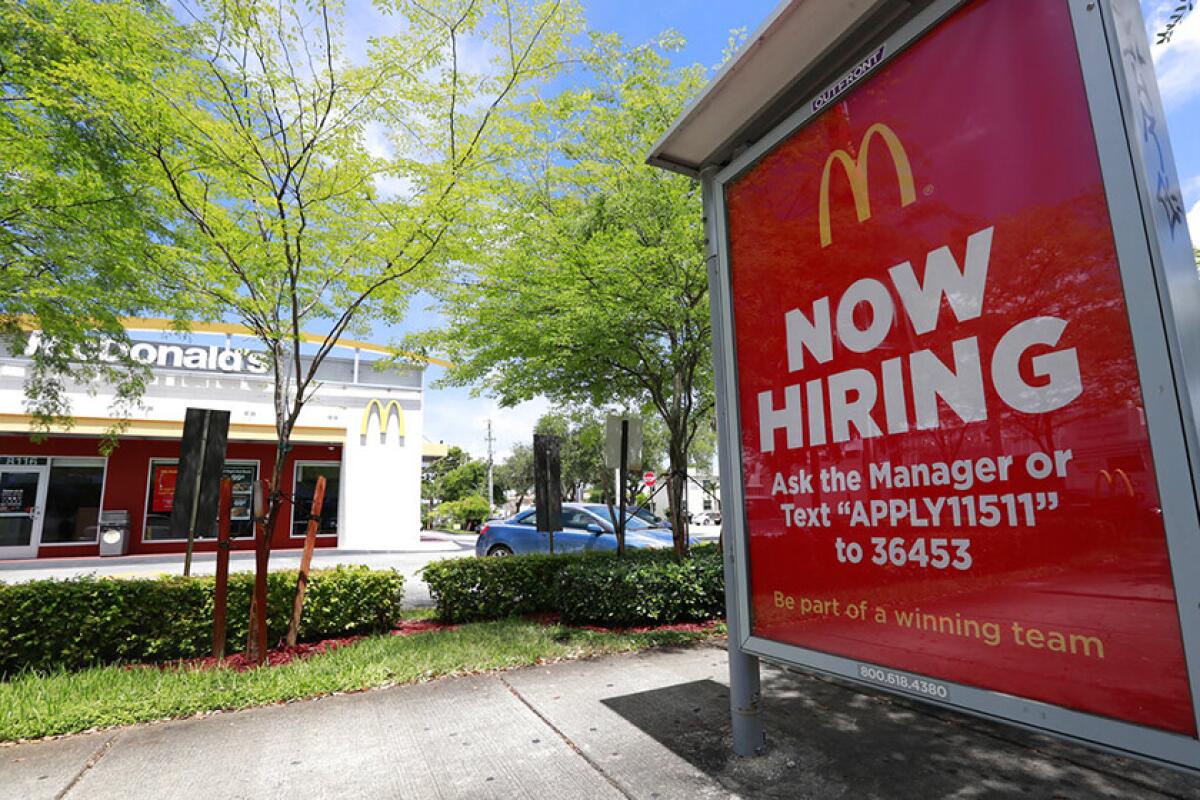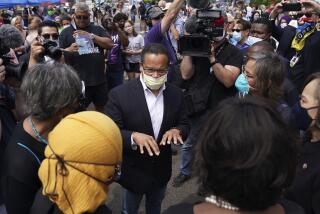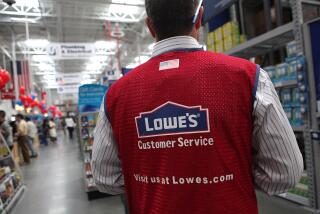Companies scramble to hire diversity officers, but progress is slow

- Share via
Chief diversity officers have become a hot item in U.S. corporate suites, with hirings setting records and big-name companies such as Levi Strauss & Co. poaching peers for management talent.
After the police killing of George Floyd touched off mass protests demanding more equity for Black people last year, new hires of diversity chiefs in the Standard & Poor’s 500 index jumped to as many as a dozen monthly — almost triple the rate of the previous 16 months, according to research from executive recruiter Russell Reynolds Associates. A separate analysis of a broader group of public companies found that at least 60 firms had appointed their first diversity leader since last May.
“What’s different this time is that the whole world is focused on it,” said Tina Shah Paikeday, who leads Russell Reynolds’ diversity and inclusion advisory practice.
If history is any guide, there’s no guarantee the hiring boom and unprecedented promises in response to the Black Lives Matter movement will convert into lasting change. While 85 of the nation’s top 100 corporations tracked by Bloomberg for corporate diversity have a chief diversity officer, representation of minorities within their workforce continues to lag. Recruiting a new leader sends a strong signal, but it takes more than one executive to make an impact in the face of institutional pushback.
Under pressure, corporations have started to take concrete actions that can be measured. McDonald’s Corp., Microsoft Corp. and Boeing Co. have set hiring quotas. IBM Corp. has dropped degree requirements that had proved barriers to recruiting minorities. Eighty-one companies in the Bloomberg tracker have expanded their recruitment pool to historically Black colleges and universities.
Chief diversity officers are not new — Intel Corp. has had one for 16 years and companies including Tesla Inc. added the role in recent years.
Still, even after the flood of new hires, only about 53% of S&P 500 firms have such a position or equivalent, up from 47% in 2018, Russell Reynolds research shows.
Progress has been slow, and turnover high. The average tenure is 3.2 years, compared with 5.5 years for a CEO. Apple Inc., for instance, has had three diversity executives since the position was created in 2017.
Once installed, diversity chiefs often face challenges such as lack of budget and direct reports. An oft-cited 2019 study from Boston Consulting Group found that even as 97% of workers said their company had a diversity program, only 25% said they were benefiting from it.
Traditionally, a company would hire one executive and give that person a budget of about $100,000, according to Paikeday. It could take a decade for the program to become integrated fully — a period during which the diversity leader would have changed three times, on average.
Nowadays, Paikeday sees more companies give their executive staff and a bigger budget of $500,000.
“Historically, people talked about the quick wins,” she said. “When they don’t see the quick wins right away, all of a sudden the chief diversity officer is out the door. Now people are looking for longer-term change.”
Change rarely happens when a diversity leader is separated from other departments, such as human resources. One of Obed Louissaint’s signature programs when he was in talent development at IBM in 2018 was to drop four-year degrees requirement for some job openings. That opened up IBM to skilled, degreeless candidates that had previously been invisible to managers and now make up 15% of hiring. Louissaint was promoted in November to take on a broader role at the technology company, and the chief diversity officer reports to him.
Another way to bring progress is to link executive compensation with diversity targets. Only a fraction of S&P 500 companies do so, with one notable example recently: McDonald’s.
Even that approach has to be balanced to avoid placing the focus too much on meeting quotas, said Damien Hooper-Campbell, who joined Zoom Video Communications Inc. as the videoconference company’s first chief diversity officer in June.
“Numbers change, but maybe the feeling won’t change,” Hooper-Campbell said. It’s “not just majority walking in minority shoes, but also minority walking in majority shoes, and finding ways to do that in a busy, probably virtual, world. If you get close to someone’s experience, and you can feel it, you’re more likely to take action.”
Hooper-Campbell’s career is a testament to the high demand in his line of work. He became Uber Technologies Inc.’s first diversity chief in 2015, before moving the following year to EBay Inc., where he stayed until he saw an opportunity at Zoom last year, approached the company and got hired.
Facebook Inc. requires recruiting managers to include at least one candidate from under-represented groups — if they don’t, they need to seek an exemption from their boss.
Eventually, when all employees recognize that more diversity means a broader variety of ideas and an increased likelihood of success, they begin to get more comfortable with the changes, said Maxine Williams, chief diversity officer at the social network company.
“The floor ... is making them understand that there’s something in it for them, too,” said Williams, whose job was elevated last year to report directly to Chief Operating Officer Sheryl Sandberg and sit on Chief Executive Mark Zuckerberg’s executive team.
Success requires an encompassing view of diversity. After the MeToo movement against sexual harassment, many companies focused on bringing in and promoting women. The reckoning on race in America last year forced some firms to quickly address their shortcomings and include more measures to hire and retain Black employees.
When Trudy Sullivan was appointed as the first chief communications and diversity, equity and inclusion officer at Health Catalyst in 2019, the company was ramping up programs aimed at gender parity. The Salt Lake City-based healthcare provider has since adapted the programs toward minorities. It also created an employee affinity group, Shades, that is working with customers seeking to do a better job with healthcare in underserved communities, she said.
“Yes, patience is a virtue, but sometimes being a little bit impatient about these things that need to be changed more quickly is not a bad thing,” Sullivan said. “I’m seeing that urgency that I haven’t in the past.”
Bloomberg writer Lauren Pizzimenti contributed to this report.
More to Read
Inside the business of entertainment
The Wide Shot brings you news, analysis and insights on everything from streaming wars to production — and what it all means for the future.
You may occasionally receive promotional content from the Los Angeles Times.










